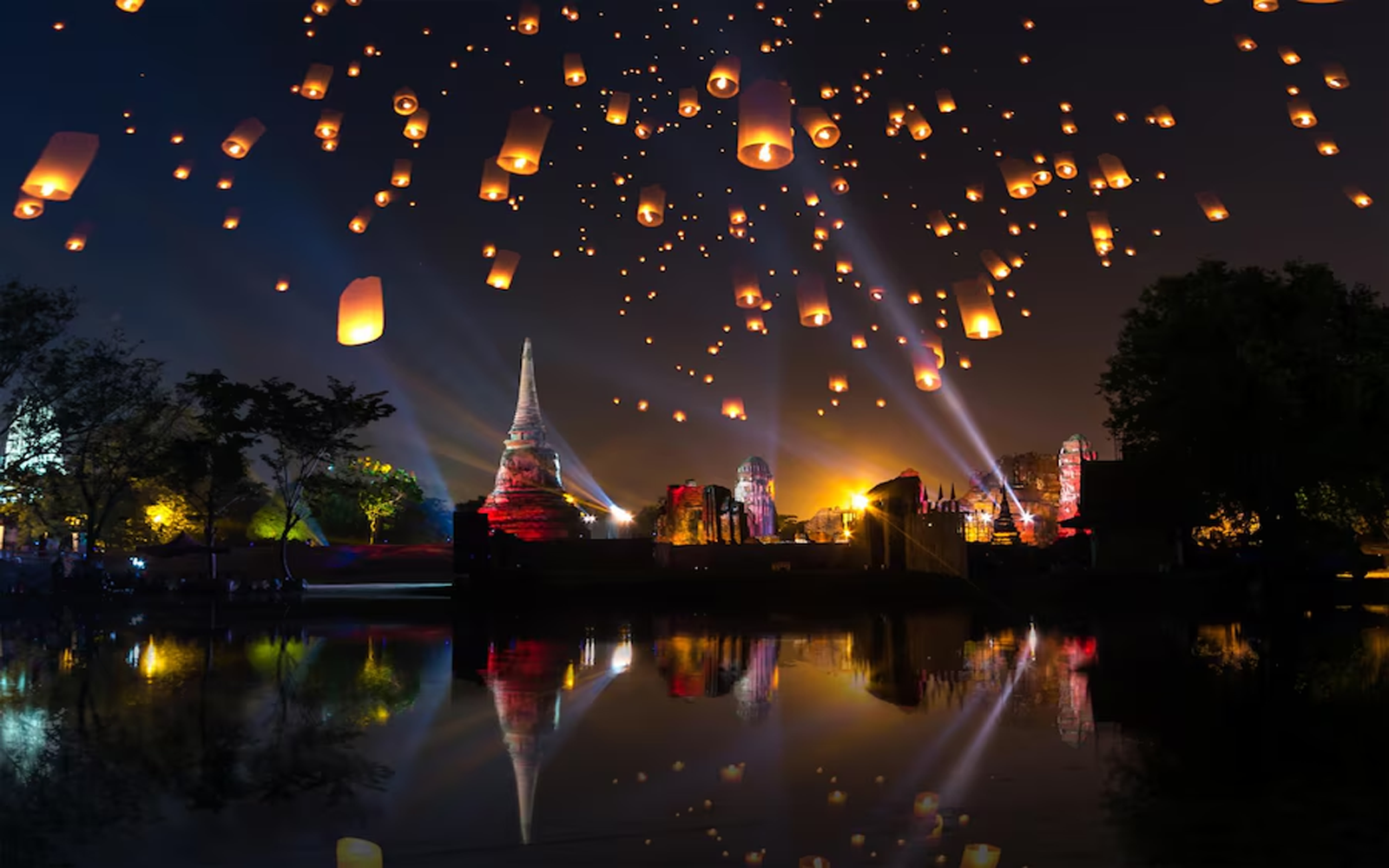
On clear nights, when the sky is wide open, the full moon of Tazaungmon shines brightly alongside the beautiful Pleiades constellation. Tazaungmon, the eighth month of the Myanmar calendar, is a special time of year filled with vibrant celebrations. It marks the harvest season, and with rice fields freshly gathered, farmers joyfully celebrate the rewards of their hard work. The month feels alive, just like the ribbed gourd flowers blooming everywhere, with festivals lighting up every corner. Let’s dive into the colorful celebrations of Tazaungmon and discover the magic behind this time of year.
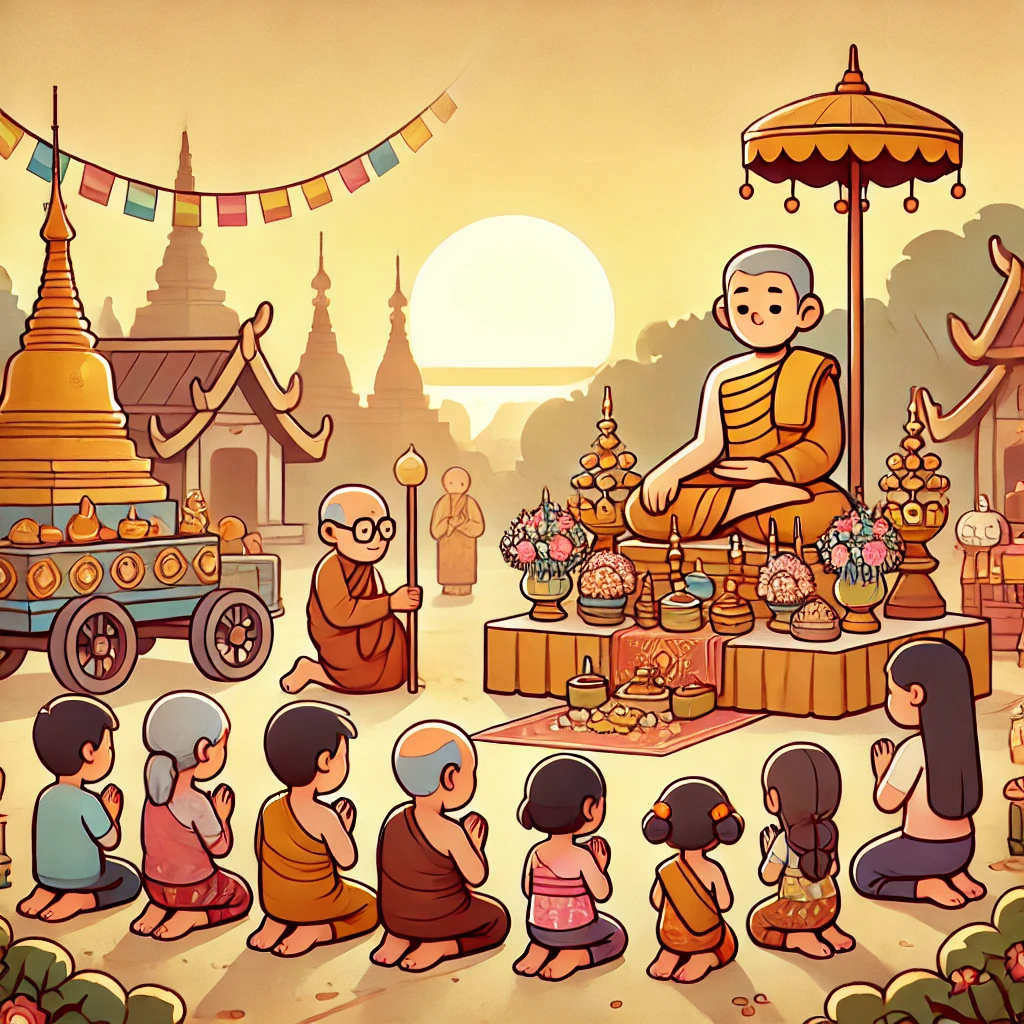
The Significance of Robe Offerings
In the month of Tazaungmon, three main types of traditional robes are offered: Kahtina robes, Ma-tho Thingan (non-sewn robes), and Kya Thingan (lotus robes).
The Kahtina Robe Offering Ceremony (Kahtina Festival)
The Kahtina Festival is one of Myanmar’s most significant religious ceremonies and can be considered the hallmark celebration of Tazaungmon. The word "Kahtina" comes from the Pali term meaning strength, stability, and firmness. This ceremony involves offering Kahtina robes to the Sangha within a one-month period, from the day after the full moon of Thadingyut to the full moon of Tazaungmon. The offering is not intended for any individual monk but for the entire monastic community, following strict guidelines to maintain its sacredness. The significance of Kahtina lies in the dedication and discipline of both the donors and the monks.
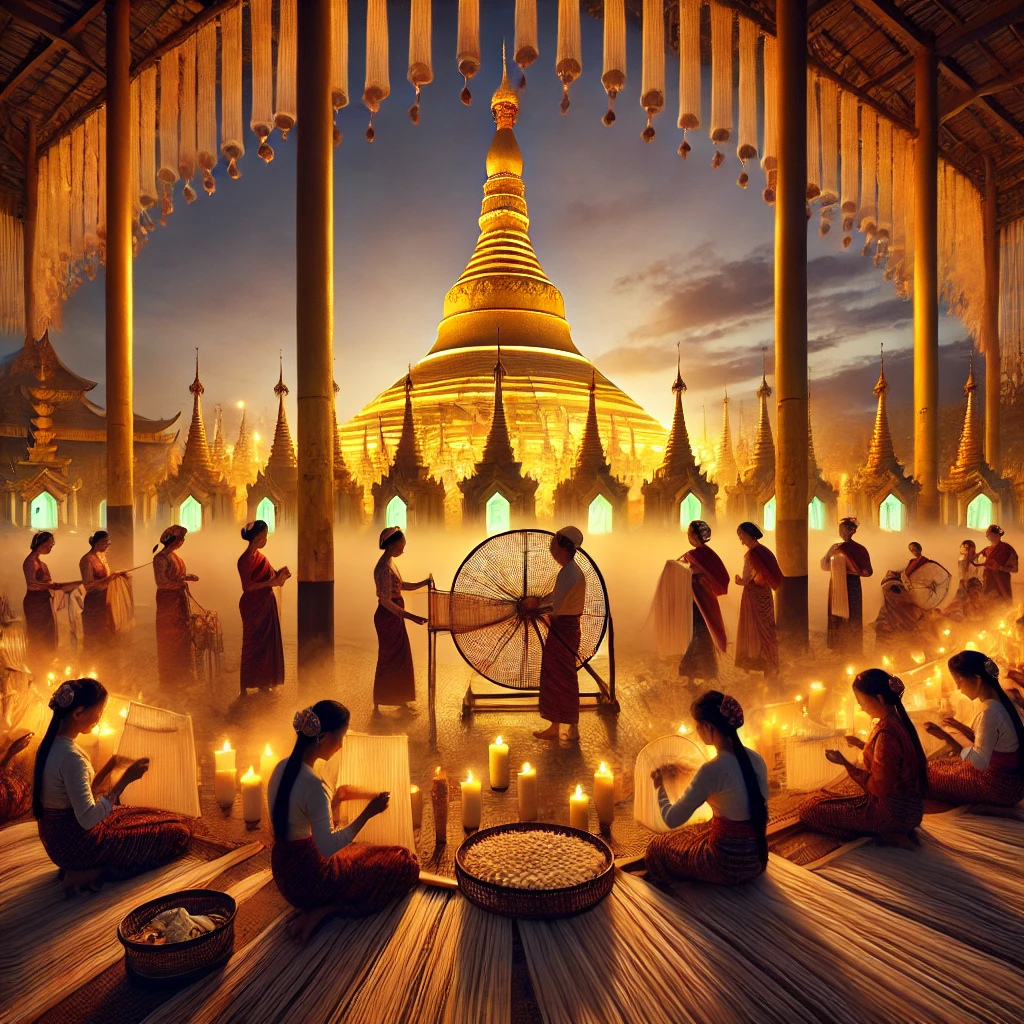
Ma-tho Thingan Offering Ceremony
Ma-tho Thingan robes must be completed in a single night, with the entire process—from spinning cotton to sewing—finished before dawn. This tradition symbolizes urgency and devotion and is a highlight of the Tazaungdaing Festival. Pagodas like Shwedagon and Botahtaung in Yangon host these ceremonies, bringing communities together to work tirelessly through the night, earning spiritual merit and fostering a spirit of unity.

Kya Thingan
As lotus flowers bloom beautifully during Thadingyut and Tazaungmon, it’s the perfect time to offer Kya Thingan robes. These special robes are made from the delicate fibers inside lotus stems, a craft unique to the Inle Lake region. Weaving these fibers into fabric requires immense patience and skill, making Kya Thingan an invaluable symbol of purity and devotion. The tradition highlights the artistry and commitment of local weavers, preserving a unique cultural practice.
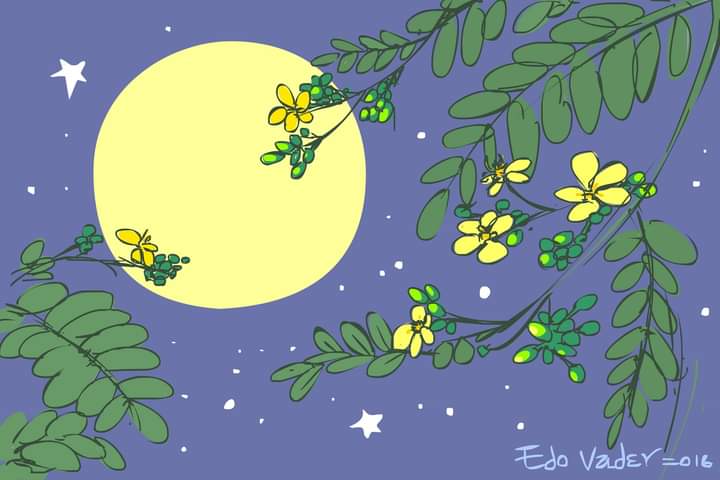 This photo is credited to Edo VaderCherished Tazaungmon Delicacies
This photo is credited to Edo VaderCherished Tazaungmon Delicacies
Cassia Flower Bud Salad
On the full moon night of Tazaungmon, it’s believed that the medicinal properties of plants are at their peak, thanks to the influence of the stars and constellations. The cassia tree, or Mezali, absorbs the moon's energy, making its buds potent for treating various ailments. Families prepare and enjoy cassia flower bud salad, a slightly bitter but flavorful dish, sharing it with neighbors or offering it at monasteries. This cherished dish not only reflects culinary traditions but also strengthens bonds within the community.
 This photo is credited to Edo VaderPlayful Traditions and Community Spirit
This photo is credited to Edo VaderPlayful Traditions and Community Spirit
The "Kyi Ma Noe" Festival
During the season when young men received htoke kwing min gyaung (Burmese traditional tattoos), they would engage in a playful challenge on the night after the Tazaungmon full moon. The goal was to "steal" items from homes before dawn, known as Kyi Ma Noe or "before the crows wake." The collected items were placed in the village center, and homeowners would reclaim them the next morning by paying a small fee, which went toward donations for buying monk’s robes and alms. This joyful festival is rooted in community spirit, emphasizing fun and camaraderie rather than real theft or harm.
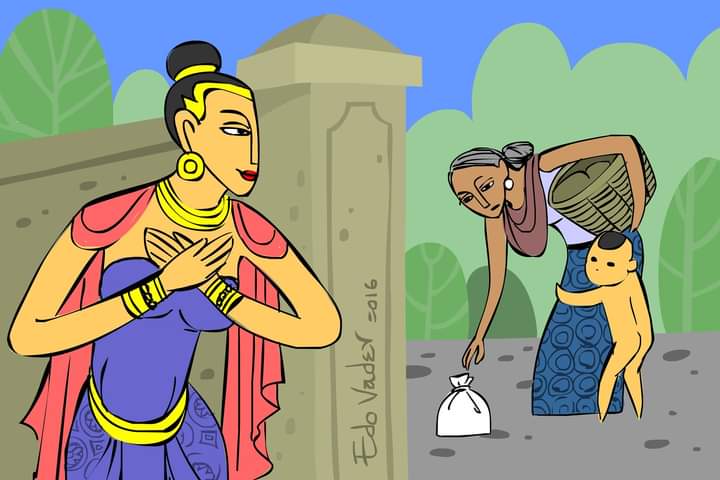 This photo is credited to Edo VaderThe Tradition of Ponthaku Offering
This photo is credited to Edo VaderThe Tradition of Ponthaku Offering
Ponthaku refers to items freely given without expectation of return. Small packages of rice, money, clothes, or snacks are prepared and placed discreetly at busy intersections before sunrise, often with a note saying “Ponthaku Donation” to encourage recipients to take them with a pure heart. This practice, carried out throughout Tazaungmon, brings immense joy to both the donors and recipients, strengthening the spirit of giving and gratitude.
Beyond the well-known festivals, there are also lesser-known or disappearing Tazaungmon traditions, such as the Constellation Festival, the Fire Balloon Festival, the Nirvana Market, and the Shwe Ma Lwe Festival. With the clear skies, pleasant weather, and joy of the harvest, it’s no wonder that celebrations are abundant. These festivals, whether religious or not, are more than just occasions for fun; they are precious cultural legacies that must be cherished and preserved for future generations.




Comments